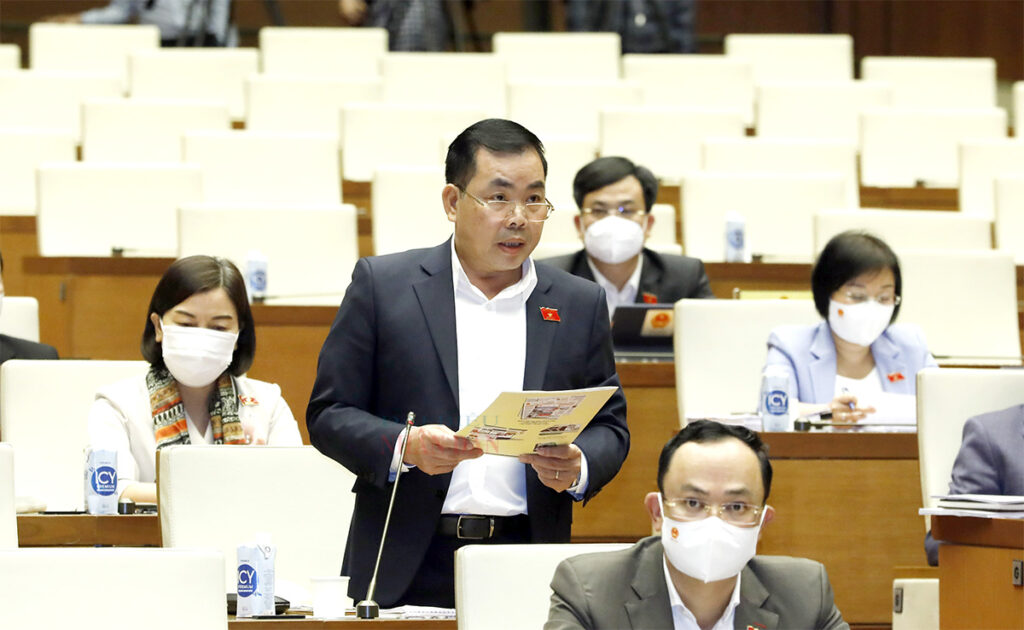“If no FiT mechanism comes into effect and no roadmap for electricity price increase is formulated in 2023, renewable energy players are unable to determine financial indicators and subsequently, investment rates.”
Shared by Mr. Nguyen Quang Huan – Member of the National Assembly of Binh Duong, in the interview with Vietnam Business Forum reporters, regarding the renewable energy market under the new status quo.

– Renewable energy power plays an important role in the goal of ensuring Energy Security and achieving Net Zero by 2050, could you please share about the development potential of Vietnam’s renewable energy sources?
Renewable energy is a clean and green source of energy that results in little to no emissions. During operation, the renewable energy industry releases no carbon into the environment, so it can be considered as the cleanest source of electricity. However, it is unreasonable to deny this industry’s participation in the emission process, as a small amount of CO2 equivalent may be generated during processing and manufacturing equipment.
At COP26, Prime Minister Pham Minh Chinh affirmed Vietnam would achieve Net Zero emissions by 2050. Currently, the energy sector is emitting about 40% of total emissions under the Business As Usual (BAU) scenario. With a GDP growth rate of 7-8% per year, Vietnam’s total emissions will reach about 1.5 billion tons of CO2 equivalent and the energy industry will account for about 65% of total emissions by 2050.
In contribution to Net Zero, Vietnam’s energy sector must reduce and gradually phase out coal power. Coal-fired power plants must convert input materials from coal to biomass or gas from 2035 under the scenario of net-zero emissions by 2050. Coal power can be replaced by wind and solar power. In particular, offshore wind power has greater potential than onshore wind power. According to the report “Offshore Wind Roadmap for Vietnam” by World Bank, by 2030, offshore wind power capacity can increase from 1 GW to 5-19 GW, while onshore wind capacity can grow from 1.26 GW to 17.34 GW.
Developing renewable energy from wind and solar power also further ensures energy security for Vietnam as these resources are available and requires no overseas import such as coal or liquefied petroleum gas (LNG).
Nevertheless, the intermittency of renewable energy sources is the major obstacle against absorbing and transmitting electricity. Suitable technology solutions can help Vietnam overcome these disadvantages, for example, applying energy storage technology. On the other hand, it is possible to upgrade and utilize smart grid technology for more efficient electricity transmission with smarter regulation.
– In order to achieve the emission reduction target and commitments at COP 26, what plans will the Government need to implement to promote the development of renewable energy and support investors in the coming period, sir?
In my opinion, it is necessary to diverge the development pathway of wind power and solar power. Currently, Power Development Plan VIII has yet to be approved, leaving the specific plans of the Government undetermined. In general, some solutions to be applied include: (1) electricity storage, (2) upgrade and utilization of smart grid, and (3) on-site electricity consumption to avoid grid overload. To do that, energy storage, electricity production, electricity distribution and consumption technology plays a big role in operating the electricity industry. The government needs to calculate resource reserves and total investment in need to replace coal power and electricity using fossil fuels from 2035 onwards.
To support investors requires stable policies. The recent FIT policy is short-term without any transition period, which confuses investors. A variety of projects have been invested with up to USD5-7 billion but did not come into operation, causing waste. Besides, it is not only necessary to open funds to help domestic enterprises, but also support small and medium enterprises to ensure the attractive equity ratio for international green bonds and credits, leveraging investment in renewable energy projects.
For sustainable development, the Government needs clear, transparent and long-term policies. The FIT must be stable or benefit from an increase roadmap until the end of the project life cycle…
– In the past two years, renewable energy enterprises have faced many difficulties due to policy interruptions, so what advice do you have for investors?
Investors should stick to the current tariff and stay calm, never rush to invest large capital before the issuance of a clear policy. In certain circumstances, although the Government had declared the FIT deadline for solar and wind power to be 30 December 2021 and 30 October 2021, respectively, many investors still bet their capital on constructing the project in the hope of an policy change, overdependent on luck, leaving the project abandoned after completion due to the lack of new tariff mechanism. Some investors go bankrupt under the burden of paying bank interest while gaining no revenue, which is a painful lesson for investors.
– Thank you Sir!
Source: Vietnam Business Forum Magazine

